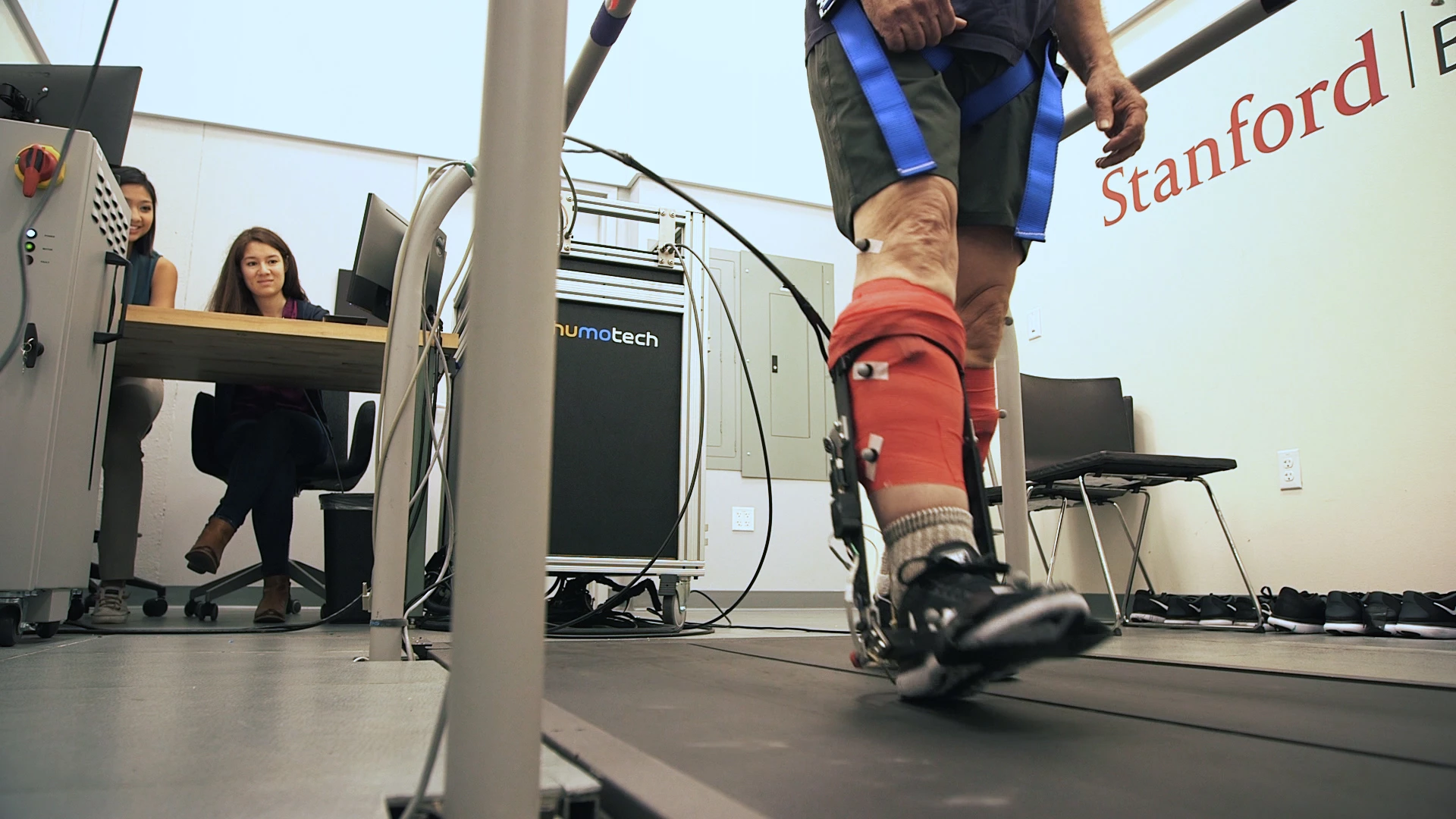Engineers at Stanford University are developing a prototype ankle exoskeleton to help people walk faster. That may sound like another weird novelty gadget, but it's designed for the serious purpose of helping those whose gait is slowing down due to age or infirmity.
As people get older, they tend to walk slower. Part of this is that they realize that there's no point in hurrying, but there's also the onset of neuromuscular degeneration or general wear and tear. As a result, older people and those suffering from various conditions find themselves walking frustratingly slower than they'd like.
To help overcome this, the Stanford team is working on a powered exoskeleton concept that can take up some of the physical effort, allowing the wearer to move faster. When complete, the device will fit around the shin and inside a running shoe, letting the wearer select a preferred walking speed.
Currently, the exoskeleton is an emulator. That is, it's an experimental setup used on a treadmill, where the exoskeleton is powered by a tether hooked up to large outside motors and controlled by an algorithm. As the wearer walks, the exoskeleton acts like a mechanical calf muscle, putting a bit of force into every step by tugging the heel upwards and pressing the toes down. This can increase the wearer's walking speed by roughly 40 percent, which was unexpected.
To test the emulator, 10 young, healthy adults were asked to walk in five different modes in normal shoes, then the exoskeleton with power off, and then with power on in three different modes. Two modes optimize speed and efficiency respectively, while the third was a placebo that acted as a control.
As they walked on a treadmill, the algorithm adjusted the settings on the exoskeleton, optimizing it over 150 rounds, taking about two hours. While the speed was increased by up about 40 percent, energy efficiency went up only about two percent, but efficiency wasn't the prime target for the first round of tests.
The immediate goal is to make the prototype more efficient and comfortable. Eventually, it will be able to produce an exoskeleton that can work on its own and can be worn by older people. This more advanced version will not only improve walking speed, but also help to relieve pain from overloaded joints or imbalance.
"A 40 percent increase in speed is more than the difference between younger adults and older adults," says Steve Collins, associate professor of mechanical engineering at Stanford. "So, it’s possible that devices like this could not only restore, but enhance self-selected walking speed for older individuals, and that’s something that we’re excited to test next."
The research was published in IEEE Transactions on Neural Systems and Rehabilitation Engineering.
The video below discusses the ankle exoskeleton.
Source: Stanford University






